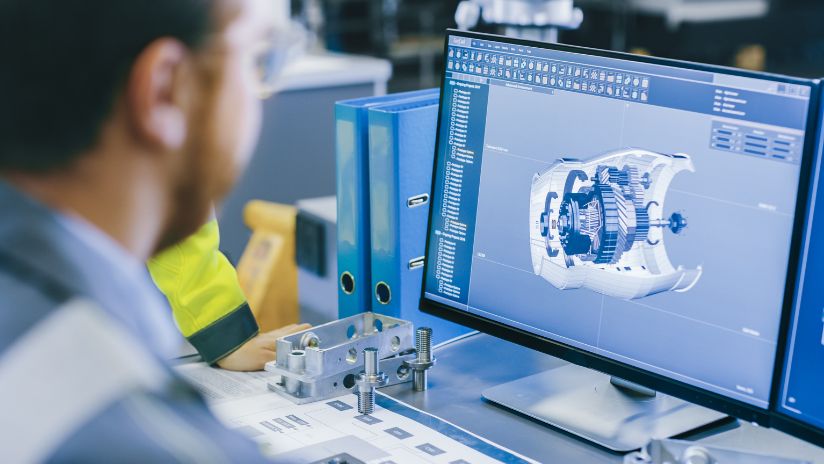Computer-Aided Design (CAD) and Computer-Aided Manufacturing (CAM) have drastically transformed the manufacturing industry over the past few decades. These software-based design tools streamline the product development process, from initial ideation to the final stages of production. Despite these advancements, certain challenges still remain within the realm of CAD/CAM, including repetitive tasks, inefficient workflows, and limited design options. Artificial Intelligence (AI) is emerging as a promising avenue to further enhance CAD/CAM applications in manufacturing. The integration of AI into CAD/CAM systems has the potential to significantly improve design and manufacturing processes. Learn more about AI (Artificial Intelligence) and the future of CAD/CAM in manufacturing.
Reducing Repetitive, Boring Tasks
AI algorithms can be designed to automate many mundane and repetitive tasks associated with CAD/CAM processes. By taking on this workload, AI can free engineers and designers from tedium, enabling them to focus on higher-level creative and strategic tasks. This not only improves productivity but can also lead to reduced workplace stress and higher job satisfaction.
Making Helpful Design Suggestions
AI-powered CAD/CAM systems can also provide real-time design suggestions based on previous patterns and commonly occurring issues. By leveraging insights gathered from vast datasets, these systems can quickly identify potential problems and offer alternative solutions, resulting in more efficient and optimized designs.
Improving Workflows and Productivity
AI can play a crucial role in improving the overall workflow of CAD/CAM systems by identifying bottlenecks and inefficiencies in existing processes. AI enables shorter development cycles and reduced production costs by guiding engineers to take the most effective actions at the earliest stages of design.
Innovative Design Techniques
The implementation of AI in CAD/CAM systems can also lead to innovative design techniques. For example, AI-driven generative design utilizes algorithms to generate a wide variety of design possibilities based on specified constraints and objectives. With this technology, designers can explore novel solutions to complex geometries and material requirements, leading to more innovative and efficient products.
Real-World Applications of AI (Artificial Intelligence) in CAD/CAM
Various industries already benefit from AI-driven advances in CAD/CAM systems. General Motors and Mercedes-Benz have partnered with CAD/CAM company Autodesk to use AI in the design of lighter-weight seatbelt brackets (GM) and new suspension systems for racing cars (Mercedes).
In the medical device industry, AI-driven CAD/CAM systems are being utilized to create custom implants and prosthetics based on individual patient data. This personalized approach maximizes comfort and functionality for patients while reducing the overall development and fitting time.
As AI continues to advance, its integration with CAD/CAM systems in manufacturing and fabrication will likely yield significant improvements in design efficiency, productivity, and innovation.
This isn’t to say this integration won’t be without its challenges. CAD/CAM engineers must adapt to being critics, curators, and contributors to what AI tools suggest. Although AI can digest massive datasets to inform its suggestions, human judgment about how end users of designs will react and interact with AI-designed structures will still be necessary to ensure designs meet human needs.
Ultimately, the future of AI and CAD/CAM in manufacturing may simply become a partnership. The two will work together as enhanced computerized tools that CAD/CAM designers employ to boost productivity, evaluate designs, identify potential problems, and propose design solutions.



Comment here